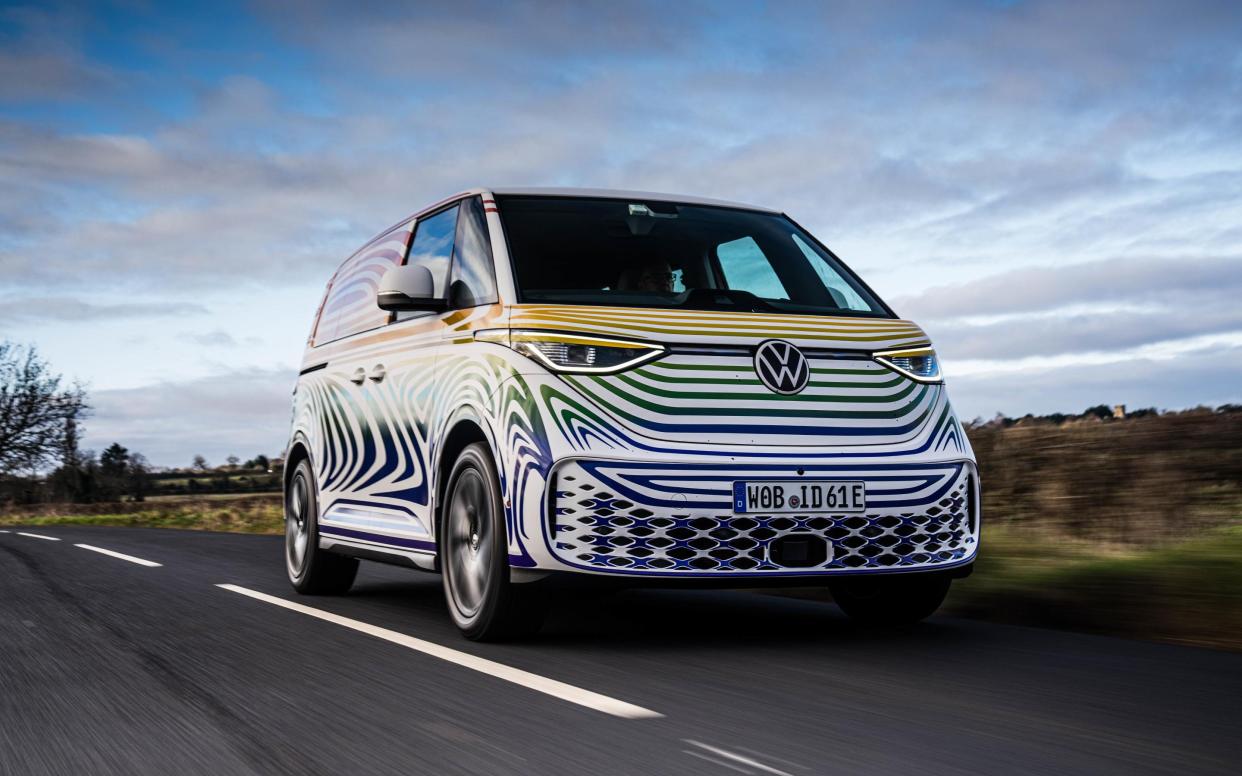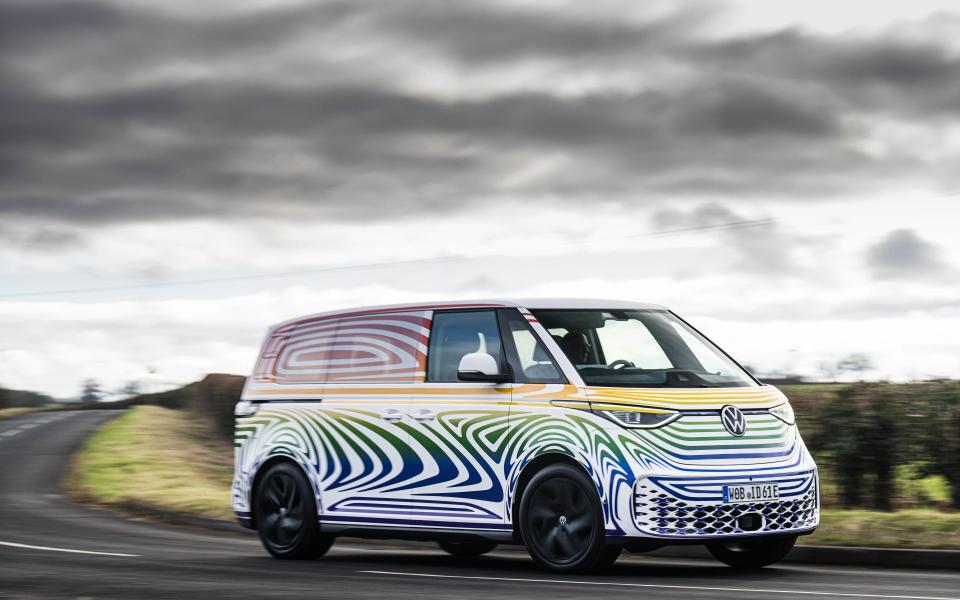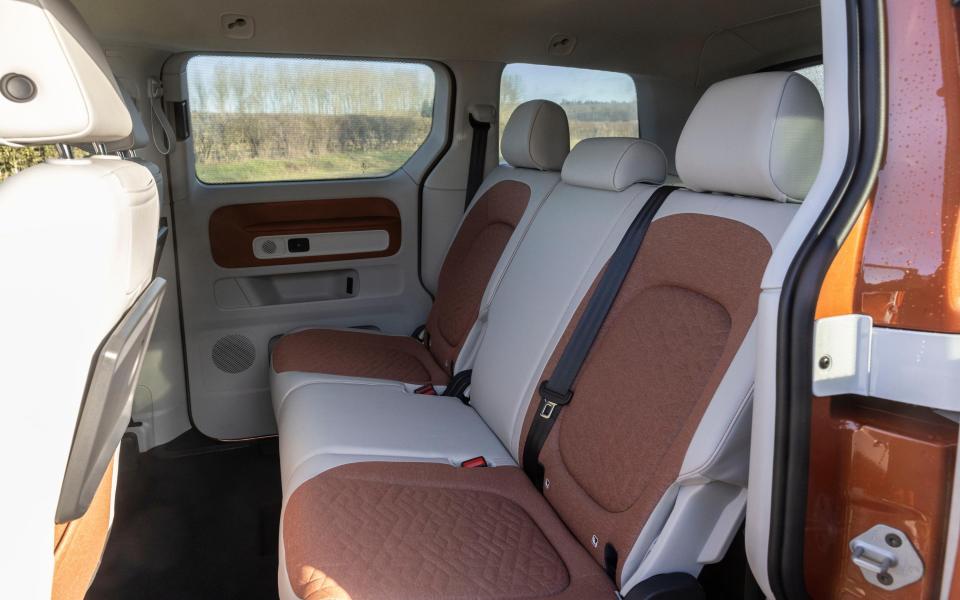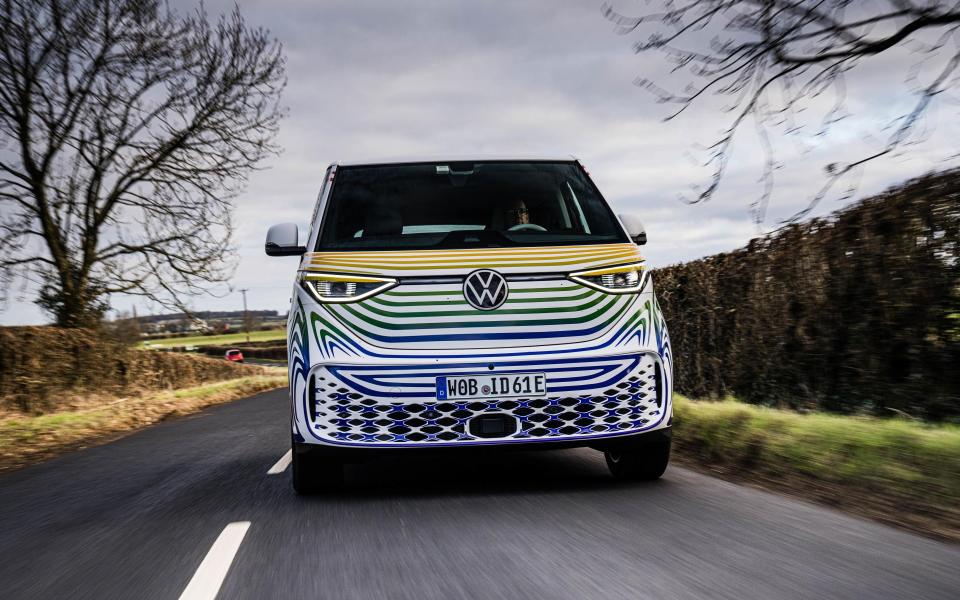Volkswagen ID. Buzz review: at last, a successor to VW’s famed Type 2 – and it’s electric

There’s a distinct sense of relief on climbing behind the wheel of Volkswagen’s new ID. Buzz as it has been a long time coming. 27 years, in fact…
Replacing the famed 1950 Volkswagen Type 2, which has spawned a gazillion buses, campers, vans and pick-ups in the interim, has been an itch that VW hasn’t been able to stop scratching, in spite of the fact that the original, in second-generation form, was still in production in Brazil until the last few days of 2013 – that’s some endorsement of the original concept…
And the public has fond recollection, too, of the bus in which we all tripped off to San Jose (or Newquay) and the camper where we got high and met that girl or boy, before it broke down in Scarborough, or was it Seattle or St Malo?
When we learned, way back in 1994, of a rumoured Type 2 successor, it was a pretty exciting moment, mixed with not a little nostalgia. This was at the unveiling of the born-again-Beetle “Concept 1” at that year’s Detroit auto show. I was there as the extraordinary Jay Mays and Freeman Thomas retro design captured headlines and hearts, and it was then that I learned of Charles Ellwood’s design for a microbus which was still lying in some VW-controlled plan chest.
Back then, this was VW playing with its history to divert attention from falling sales and profits along with job losses. It did exactly the same seven years later when in 2001 it revealed Ellwood’s design as a concept, again at Detroit. And such was the reception from the press, and an avalanche of influential American baby boomers, that the following year VW confirmed it would put the Microbus into production complete with its translucent rubber floors and cute first-generation front end. Wow, we all thought. Until it was cancelled…
In the interim we’ve lived through 20 years of still-born “Bullis” (the German nickname for the original Type 2 bus), microbuses, combis, vans and campers, none of which had the remotest possibility of being produced, instead serving only as a distraction.
The concepts included the 2011 Bulli, the 2016 Budd-e and the 2017 ID. Buzz. So perhaps you’ll forgive a small hesitation as my finger hovers over the starter of this prototype, which is “definitely going into production this year”, according to VW.

Exciting? Well yes, it is, although one might say that with the advent of VW’s MEB dedicated battery-electric platform, which will underpin so many Skodas, Seats, Cupras and Audis as well as VWs, it was only a matter of time before VW Commercials got in on the act.
Van-tastic
Electric commercials are big business right now. Russian-backed UK electric-vehicle start-up Arrival is planning a range of small assembly plants across America to service the commercial market. Similarly, Rivian is being backed by Amazon with a contract to build 100,000 electric delivery vans. Stellantis, owner of Peugeot, Citroën, Fiat and Vauxhall, is planning a range of small electric vans and larger fuel cell ones, as is Renault, and General Motors’ BrightDrop is supplying Walmart and FedEx with electric vans.
If the markets aren’t completely convinced (high-tech shares have dropped significantly in the last six months), entrepreneurs are, with huge amounts of investment going in as ever-more Draconian restrictions on inner-city transport loom.
VW is planning two versions: the bus, which will be called ID. Buzz and will cost around £50,000 when it goes on sale; and the ID. Buzz Cargo which is the panel-van version, which will cost around £42,000. Start of production is this spring, with sales commencing this autumn. Or so they say.
In time there will be a longer-wheelbase version with a bigger battery. That’s the van the Americans will get in 2025, and there will be an ID. California camper, too, though don’t expect that to be in any way cheap.
VW’s biggest battery
Both the van and the bus share the biggest-battery version of VW’s MEB platform, with an 82kWh gross and 77kWh net lithium-ion battery. The cell pack is jammed into the 2,988mm wheelbase and the rest of the van/bus is 4,712mm long, 1,980mm wide and 1,938mm high. To give some context it’s about 20cm longer than a VW Caddy van and 20cm shorter than a Transporter van, so it fits between the two. The Caddy has a 3m2 space, the ID. Buzz Cargo swallows 4m2, although the payload is a measly 580kg (a normal payload for this sort of vehicle is one tonne) and the 2,400kg gross weight means all ID. Buzz vehicles are restricted to 50mph on single carriageways and 60mph on dual carriageways, although they can travel at the 70mph limit on motorways.
Like the similarly-based cars, the ID. Buzz is rear-engined and rear-wheel drive with a 150kW (201bhp), 229lb ft electric motor driving the rear wheels via a single step-down gear. The top speed is limited to 90mph and the range is quoted at about 250 miles, although we checked in the bus’s un-zeroed computer when we climbed in and it showed an average range of about 2.6miles per kWh over the previous 500 miles, which puts the total range at about 200 miles.
Recharging can be done on a household wallbox, street charger or DC fast charger. Charge times are from 11 hours to fill from 0-100 per cent on a 7.4kW home wallbox to about an hour on a 50kW DC charger to get an 80 per cent charge.
All aboard the bus
We snagged a drive of the bus which is currently on a world tour consisting of Barcelona, Paris, Madrid, Copenhagen and, er, Milton Keynes.
On the outside all the ID. Buzz prototypes are identically vinyl-wrapped with rainbow waves so they all look like beach towels on wheels. Inside, however, my bus was upholstered with a light-cream upholstery highlighted with terracotta panels including the seat squabs and bases.

I had to distract the engineer in my test vehicle to ease the disguise panels off the dash and see the pleasing open-pore wood-panel inserts, double shelves facing the passenger and the central storage bin. It’s nicely done, retro but uncloying, with a straightforward version of the VW twin-screen system with a central instrument binnacle, which moves with the steering wheel.
The touchscreen in the centre uses the frustrating VW Group software (known as Golf 8), currently plaguing all the Group’s current offerings with the exception of Audi, which was allowed to keep some buttons on the facia.
On the road
The driving position is a bit sit-up-and-beg compared with a modern Ford Transit, although views out of the front are good and the mirrors allow you to place the ID. Buzz with a fair degree of accuracy on smaller roads. Unlike the original air-cooled Type 2 vans, though, there’s a massive distance between the driver and the front of the screen; it feels a bit like the first Renault Espace MPV (people carrier) models in that respect. Views out of the back through the rear-view mirror are obscured by the headrests and the vinyl wrap.
In the manner of a modern Mercedes-Benz, the driving selector is the right-hand steering-column stalk. Pull it down for Drive and the van pulls away smartly, gathering speed with some alacrity, although most modern vans are geared to be fast away from the traffic lights.
The steering is light and well geared, although at 30 to 40mph there’s a slight ponderousness about the handling which is the result of the long wheelbase and weight, as well as the driver’s distance from the front of the vehicle.
The brakes, too, don’t respond that well on the first push and the progression between friction and regeneration braking isn’t terribly good. You can select a higher regeneration factor with the B setting on the gear lever, which helps in urban environments. There’s a driving mode selection for Sport, Eco and Comfort, although without adaptive damping all it does is alter the algorithm on the accelerator, steering and brakes. Frankly, if you were running this bus down to Newquay or the van for a day’s delivery shift, you’d always have it in the Eco setting.
We didn’t get long with the bus so didn’t have much time to explore the passenger area, but the three rear seats seemed comfortable enough and the floor, which has a curious raised section, seemed more than adequate.
The Telegraph verdict
Ben Pons, the Dutch importer for Volkswagen, is generally credited with the drawings which resulted in the first VW Type 2 (the Beetle was Type 1) commercial being launched in 1950, but it wouldn’t have happened without the mend-and-make-do spirit of Major Ivan Hirst of the Royal Electrical and Mechanical Engineers, who devised the Beetle-based platform on which Pons based his designs, or the hard work and skills of the German engineers who put it into production. This is a noble and grand history and it explains why so many people feel they have an investment in this vehicle.

Yet somehow this short drive felt a bit of letdown. Perhaps I’ve driven too many cars based on VW’s dedicated EV platform recently, but this just felt like an ID.3 electric hatchback that had eaten all the pies, especially as we weren’t officially allowed to look at the interior, where clearly a lot of effort had gone in.
Perhaps it will take longer to appreciate the ID. Buzz, maybe a long trip over several days, with my family in the back with Herbie the Labrador and maybe a picnic, but certainly with The Mamas and the Papas on the stereo.
I hope so, because we’ve all been teased for too long for this bus not to find a place in our hearts once again. We’re glad a spiritual successor to the famed Type 2 is here and can’t wait to drive the production version.
For new and used buying guides, tips and expert advice, visit our Advice section, or sign up to our newsletter here
To talk all things motoring with the Telegraph Cars team join the Telegraph Motoring Club Facebook group here

